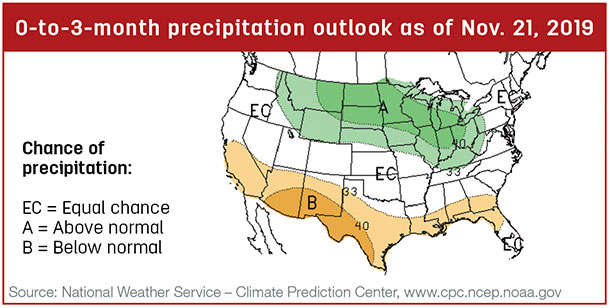One of the first steps before buying a bull is to determine what calves from the operation will be used for and how they will be marketed. Will some heifers be retained for replacements, sold as replacements to other producers, retained through the feedlot and sold on the rail or sold as stocker or feeder heifers? Will steer calves be sold as stocker or feeder steers or retained through the feedlot?
In all situations, it is critical to get a live calf on the ground and raised to weaning. So actual or adjusted scrotal circumference and information related to calving ease should be evaluated on every bull with minimum and maximum cutoffs set for each trait. Scrotal circumference influences both semen volume and quality – and, as a general rule, bulls should be at least 32 centimeters at a year old.
 Structural soundness is also critical so that bulls can easily get around and check and breed cows and last for several years. Additionally, disposition should be emphasized in all situations. Temperamental bulls are more likely to tear up facilities, injure themselves or you, and their calves are likely to shrink more when sold.
Structural soundness is also critical so that bulls can easily get around and check and breed cows and last for several years. Additionally, disposition should be emphasized in all situations. Temperamental bulls are more likely to tear up facilities, injure themselves or you, and their calves are likely to shrink more when sold.
For commercial producers, three main scenarios exist that will influence what and how many factors and what performance information need to be considered when evaluating bulls. Below is a description of these scenarios.
1. In this scenario, both steers and heifers are sold as stockers or feeder cattle off the ranch. Growth traits should be the focus in this scenario.
2. In this situation, steers and heifers are retained through the feedlot and will be sold on a grid in most years. Both growth and carcass traits should be emphasized.
3. In this situation, some replacement heifers will be kept or sold to other producers. Fertility and maternal traits should be emphasized in this situation.
Regardless of which scenario applies to your operation, it is important to focus on only the most important things to that scenario and not get overwhelmed trying to look at every expected progeny difference (EPD), index or performance information for a bull. Next month, we will take a closer look at some of this information and discuss how it can be best used. ![]()

-
Jason Banta
- Associate Professor and Extension Beef Cattle Specialist
- Texas A&M University
- Email Jason Banta






